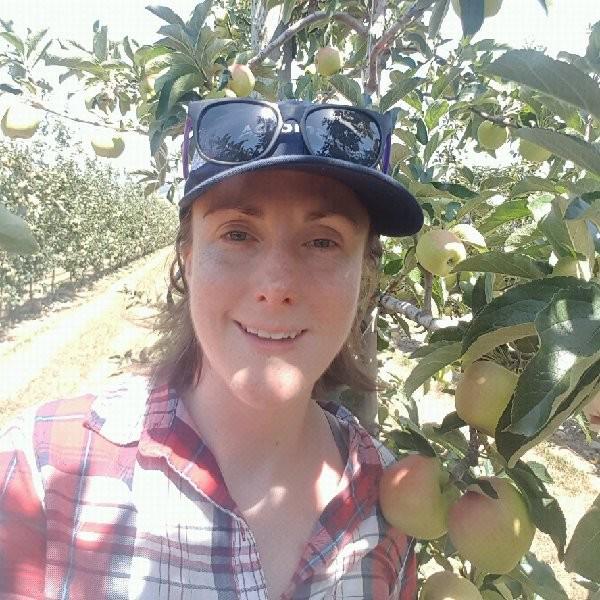Study Leads to Greater Use of Wildflower Strips in Apple Orchards
Thursday, 19 November 2020
Research by a University of Worcester graduate, which advocated the use of wildflowers in commercial apple orchards and led to a change in production policy, has been published in an international science journal.

Megan McKerchar conducted the study as part of her PhD at the University, looking at whether putting in strips of wildflowers to encourage certain insects could decrease the number of pests and enhance pollination.
The study found wildflower strips underpinned fruit production, increased biodiversity, and provided the potential for growers to decrease the need to use pesticides. The results led to the mandatory adoption of wildflower strips in all new UK Jazz apple orchards. Growers must now put aside 10-15 per cent of the orchard area to be established with wildflower habitat. It has also influenced agri-environment policy by advocating to Natural England the inclusion of wildflower strips in orchards under England’s Countryside Stewardship scheme. Her study has featured in 'Agriculture, Ecosystems and Environment: An International Journal for Scientific Research on the Interaction Between Agroecosystems and the Environment'.
Megan said: “It is great to know that my research has paved the way for change in the fruit growing industry that will help make production more environmentally sustainable. This study shows just how effective certain pollinators and natural enemies of crop pests can be if supported through the provision of wildflower habitats and I hope will lead on to further work in this field.”
The research was funded by the University of Worcester, Waitrose & Partners and Fruition PO and done in collaboration with the University of Reading and NIAB-EMR, a horticultural and agricultural research institute, who both provided co-supervision.
It was carried out in five orchards of two different apple varieties (Jazz and Braeburn) across Kent. At each site, a one-hectare orchard plot was established with wildflower strips in alleyways between rows of trees and compared with a one-hectare control plot where alleyways were managed conventionally with regular cutting. It also looked at how orchard pesticides affected natural enemies and pest regulation.
The study found that hoverflies were more diverse in orchards sown with wildflower strips, and higher levels of pest regulation were achieved in Braeburn orchards, most likely due to the associated increase in earwigs. But it also revealed that the potential benefits of wildflower strips are masked by the use of pesticides.
It concluded that, if growers want to support beneficial insects (natural enemies and pollinators) in modern apple orchards, they need to provide wildflower habitat in their orchards whilst considering the type and frequency of pesticide sprays used.
Previous research has shown that the presence of wildflower strips can enhance the number of visits by pollinators to crops, increasing the number of flowers pollinated. It has also revealed the potential of wildflower habitat to contribute to natural pest regulation in a range of crop types. However, this is the first-time that both the benefits of pollination and pest regulation have been studied simultaneously in dessert apple orchards. Dr Duncan Westbury, Principal Lecturer in Ecology and Environmental Management, oversaw the research.
“It is wonderful to know that, by eating Jazz apples produced in the UK, not only are we supporting UK growers, but we are now promoting biodiversity, upon which we are so reliant,” he said. “We know that pollinators and natural enemies of crop pests are supported through the provision of wildflower habitats. Now we need to know how these ecosystem services can be further enhanced to underpin more sustainable approaches to food production. This study complements other research at the University of Worcester investigating the benefits of newly created wildflower habitats in sweet cherry orchards and Spanish orange groves.”